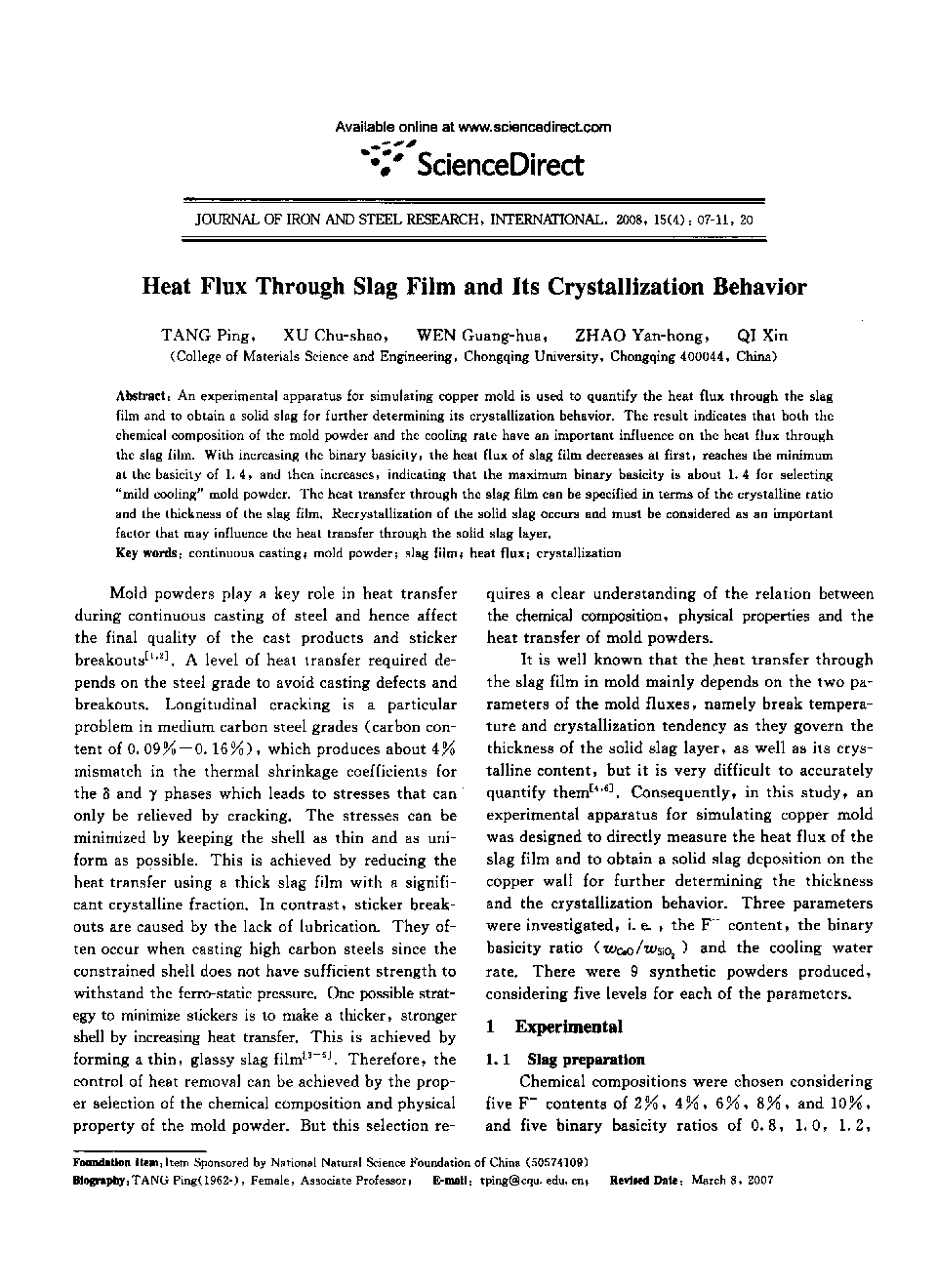| Article ID | Journal | Published Year | Pages | File Type |
|---|---|---|---|---|
| 1629884 | Journal of Iron and Steel Research, International | 2008 | 6 Pages |
Abstract
An experimental apparatus for simulating copper mold is used to quantify the heat flux through the slag film and to obtain a solid slag for further determining its crystallization behavior. The result indicates that both the chemical composition of the mold powder and the cooling rate have an important influence on the heat flux through the slag film. With increasing the binary basicity, the heat flux of slag film decreases at first, reaches the minimum at the basicity of 1.4, and then increases, indicating that the maximum binary basicity is about 1.4 for selecting “mild cooling” mold powder. The heat transfer through the slag film can be specified in terms of the crystalline ratio and the thickness of the slag film. Recrystallization of the solid slag occurs and must be considered as an important factor that may influence the heat transfer through the solid slag layer.
Related Topics
Physical Sciences and Engineering
Materials Science
Metals and Alloys
Authors
TANG Ping, XU Chu-Shao, WEN Guang-Hua, ZHAO Yan-Hong, QI Xin,
